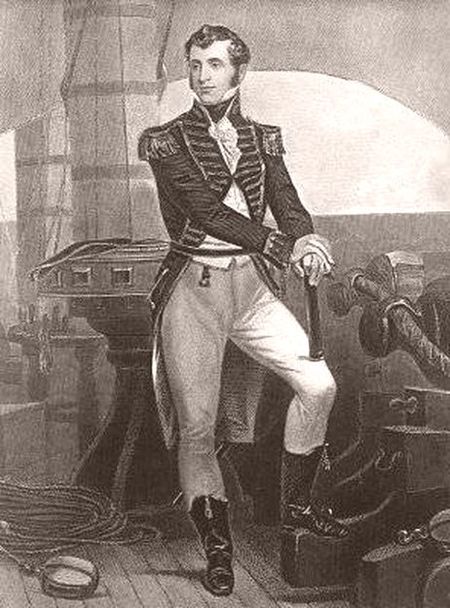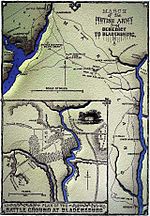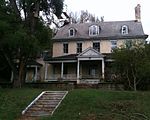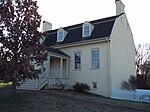Bladensburg Dueling Grounds

Bladensburg Dueling Grounds is a small spit of land, a fraction of its original size, along Dueling Creek, formerly in the town of Bladensburg, Maryland, and now within the town of Colmar Manor, just to the northeast of Washington, D.C., United States. Dueling Creek, formerly known as '"Blood Run" and "The Dark and Bloody Grounds", is a tributary of the Anacostia River, which was formerly, called the East Branch Potomac River. From 1808 the grove witnessed approximately fifty duels by gentlemen, military officers, and politicians, settling "affairs of honor". A formalized set of rules and etiquette, the code duello was usually enforced by the duelers and their seconds. The exact number of duels and the names of all the participants who fought at Bladensburg may never be known because surviving records are obscure, the events are not well documented - and dueling was illegal. Following the Civil War, dueling fell out of favor as a means of settling personal grievances and declined rapidly; the last known duel was fought here in 1868.
Excerpt from the Wikipedia article Bladensburg Dueling Grounds (License: CC BY-SA 3.0, Authors, Images).Bladensburg Dueling Grounds
Anacostia River Trail,
Geographical coordinates (GPS) Address Nearby Places Show on map
Geographical coordinates (GPS)
| Latitude | Longitude |
|---|---|
| N 38.925166666667 ° | E -76.940388888889 ° |
Address
Anacostia River Trail
Anacostia River Trail
20710
Maryland, United States
Open on Google Maps










